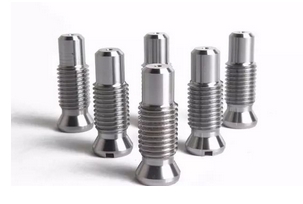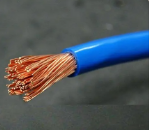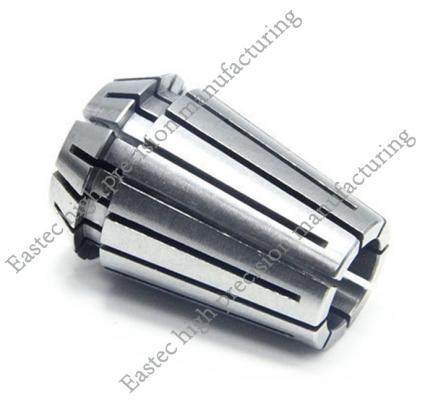
Cold heading is a forging method that uses dies to upset metal bar stock into shape at room tem)perature, typically used for manufacturing the heads of screws, bolts, rivets, etc. It can reduce or replace cutting operations. The materials for forging blanks can be copper, aluminum, carbon steel, alloy steel, stainless steel, and titanium alloys, among others. Cold heading is usually performed on specialized cold heading machines, which facilitate continuous, multi-station, and automated production. On a cold heading machine, processes such as cutting, heading, accumulating, forming, chamfering, threading, reducing, and trimming can be completed in sequence.
Next, let's briefly introduce how to choose cold heading raw materials:
I. Analysis of the Characteristics of Cold Heading Process
(1) According to the theory of metal plastic deformation, a certain pressure is applied to the metal blank at room temperature to produce plastic deformation within the die cavity, forming the specified shape and size.
(2) High-quality metals with good plastic deformation properties must be selected, with strict standards for their chemical composition and mechanical properties.
(3) There are multiple models and series of machines for cold heading bolts and nuts, with reliable equipment performance, high efficiency, and stable quality.
(4) The forming upsetting force of the workpiece is large, and the power equipment required is expensive.
(5) The workpieces have good surface quality and high dimensional accuracy; due to the presence of cold work hardening during the upsetting process, the amount of deformation should not be too large.
(6) The cold heading process has the advantages of energy and material saving. Since cold heading is done at room temperature without heating, it can save a significant amount of energy. Additionally, the material utilization rate is high during the cold heading process, reducing the waste of raw materials.
II. Key Points for Choosing Cold Heading Raw Materials
Material Selection
When selecting cold heading raw materials, the plasticity and toughness of the material should be considered first. Here are some suggestions for the selection of common materials:
(1) Copper materials: Suitable for medium and small-sized fasteners, with good electrical and thermal conductivity but relatively low strength.
(2) Aluminum materials: Lightweight and corrosion-resistant, but with low strength, suitable for applications where weight is a concern.
(3) Carbon steel: High strength and low cost, widely used in the production of various fasteners.
(4) Alloy steel: Higher strength and wear resistance, suitable for high-performance fasteners.
(5) Stainless steel: Good corrosion resistance, suitable for fasteners used in harsh environments.
(6) Titanium alloy: High strength, low density, and good corrosion resistance, but higher cost, suitable for aerospace and other fields.
Material Pretreatment
To improve the plasticity and toughness of cold heading raw materials, pretreatment of the materials is usually required. Here are some common pretreatment methods:
(1) Softening treatment: Through heat treatment methods such as annealing or normalizing, the hardness of the material is reduced, and plasticity is increased.
(2) Surface treatment: Removal of oxidation skin, oil stains, etc., from the material surface to improve surface quality.
(3) Drawing treatment: Drawing the material to achieve the desired size and shape.
III. Application Fields of Cold Heading Process
The cold heading process is widely used in the following fields:
Fastener industry: Production of standard parts such as screws, bolts, rivets, and nuts.
Automotive industry: Production of automotive parts, such as engine bolts and wheel bolts.
Construction industry: Construction fasteners and rebar connectors.
Electronics and electrical industry: Fixed parts for precision electronic components.
Aerospace field: High-performance fasteners and structural components.
IV. Development Trends of Cold Heading Process
Personalization and diversification: As market demand changes, the cold heading process will develop towards personalization and diversification.
High precision and high performance: Continuously improving the precision and performance of the cold heading process to meet the needs of the high-end market.
Automation and intelligence: Promoting the development of cold heading production lines towards automation and intelligence to improve production efficiency.
Green and environmental protection: Focusing on energy saving and emission reduction during the production process to achieve sustainable development.
In conclusion, as an efficient and energy-saving metal forming technology, the cold heading process holds an important position in China's manufacturing industry. Choosing the right cold heading raw materials and optimizing the production process can help improve product quality, reduce production costs, and create more value for enterprises. With the continuous advancement of technology, the cold heading process will play a significant role in more fields.





 Customer service 1
Customer service 1  Customer service 2
Customer service 2